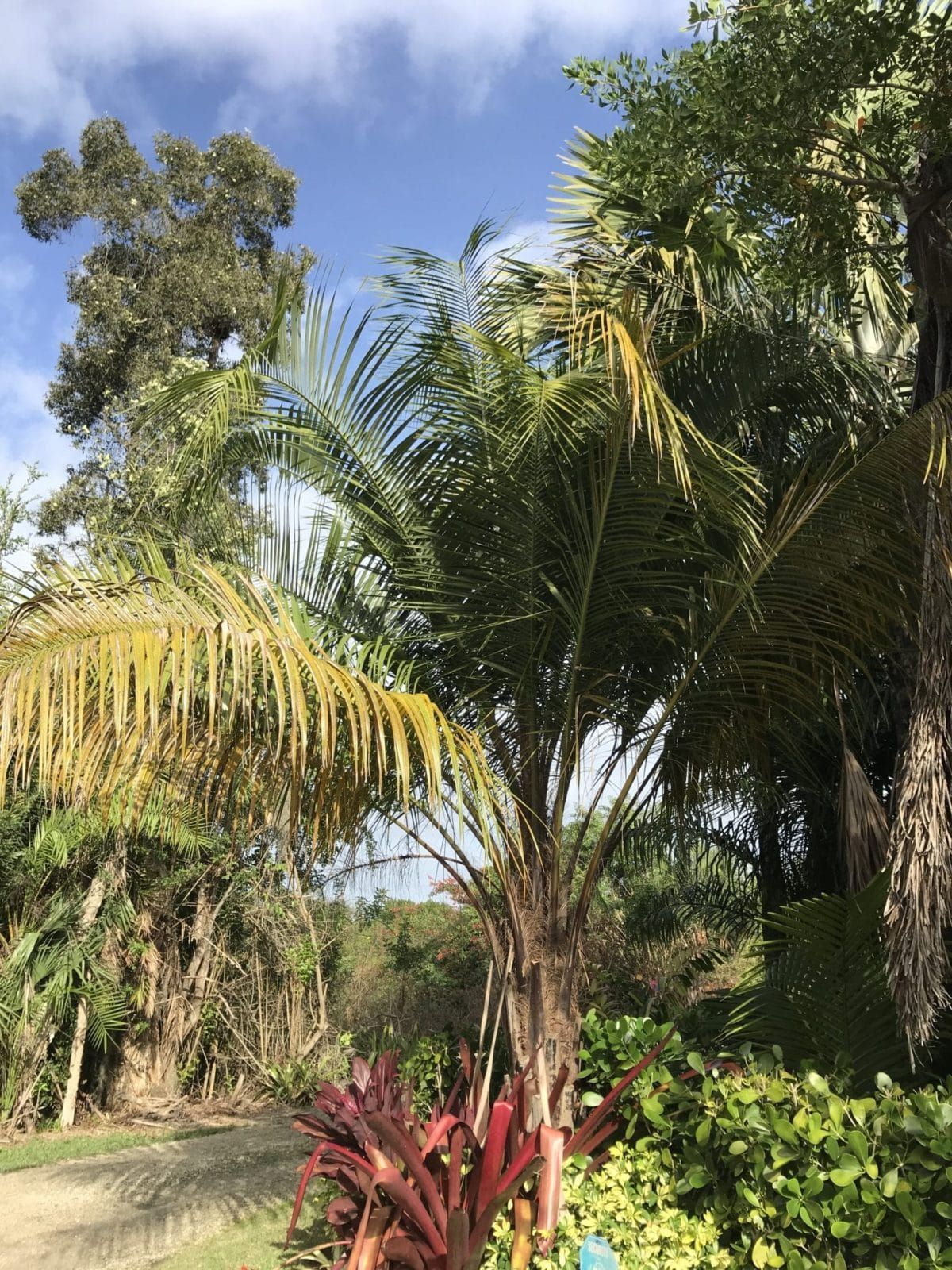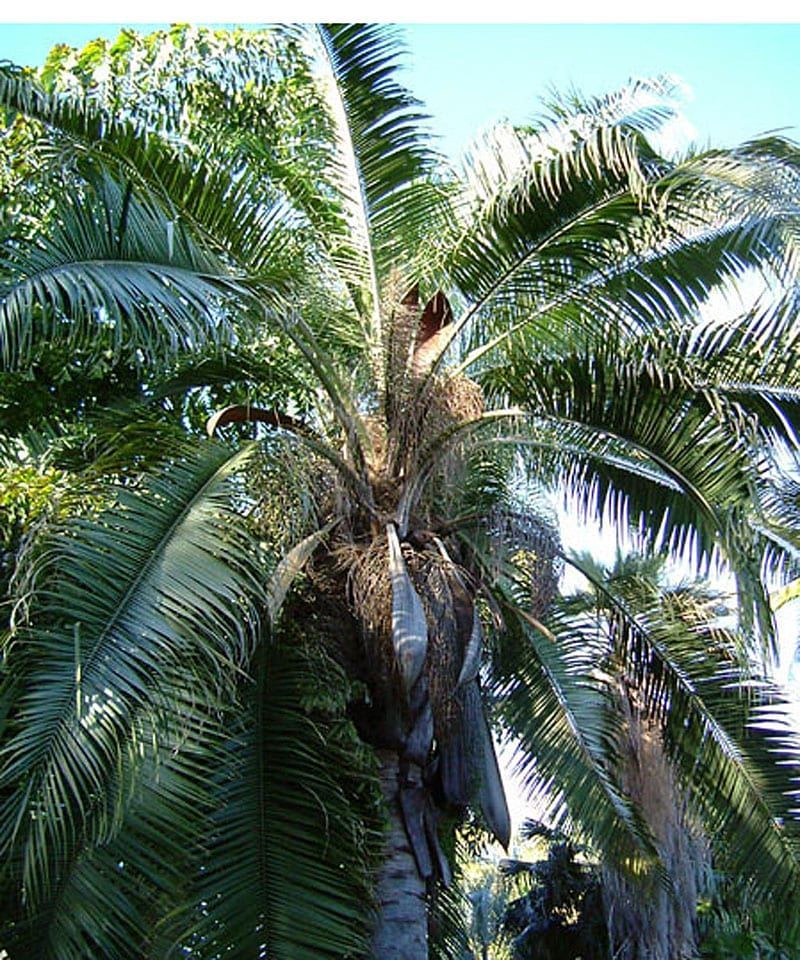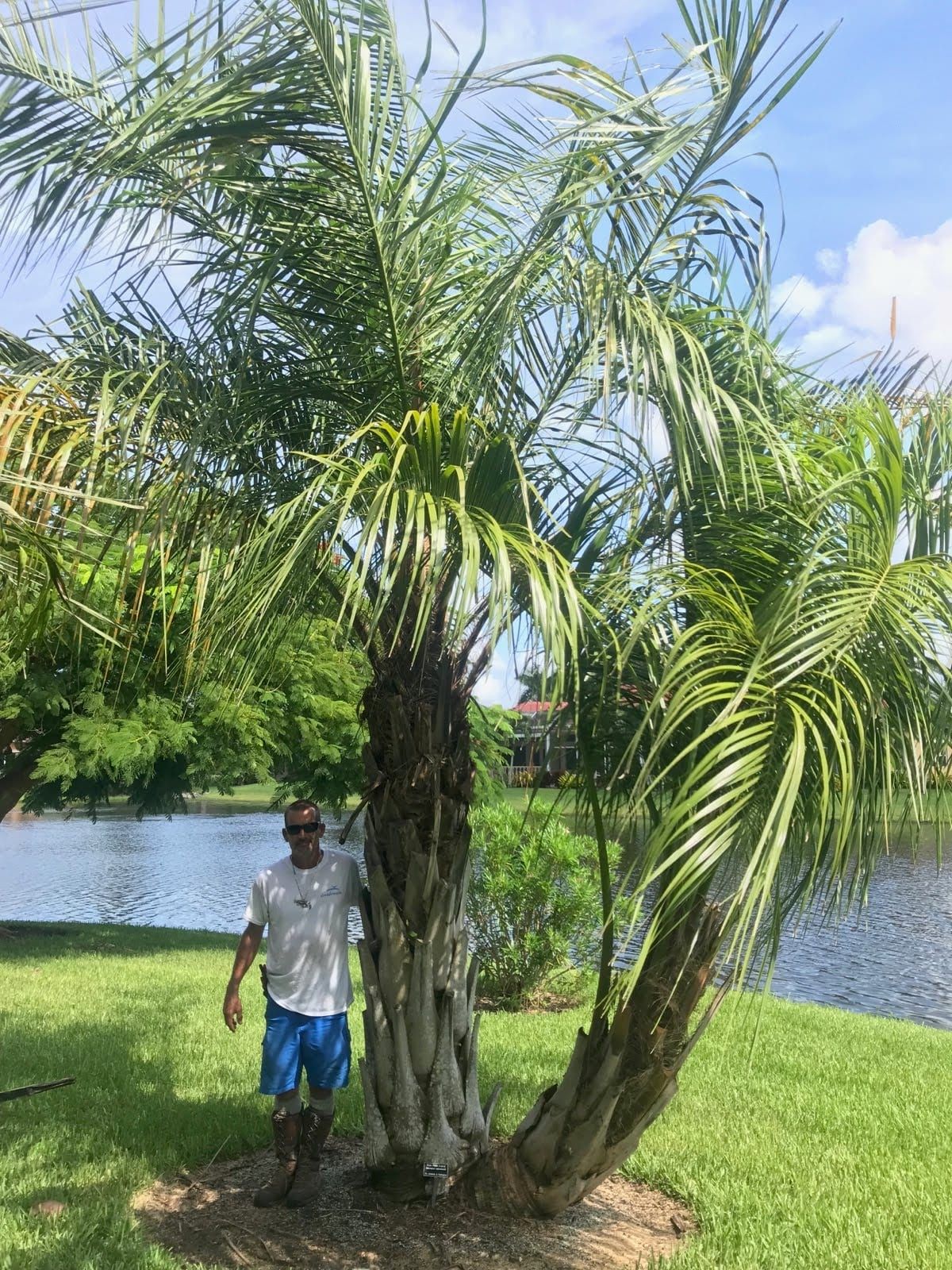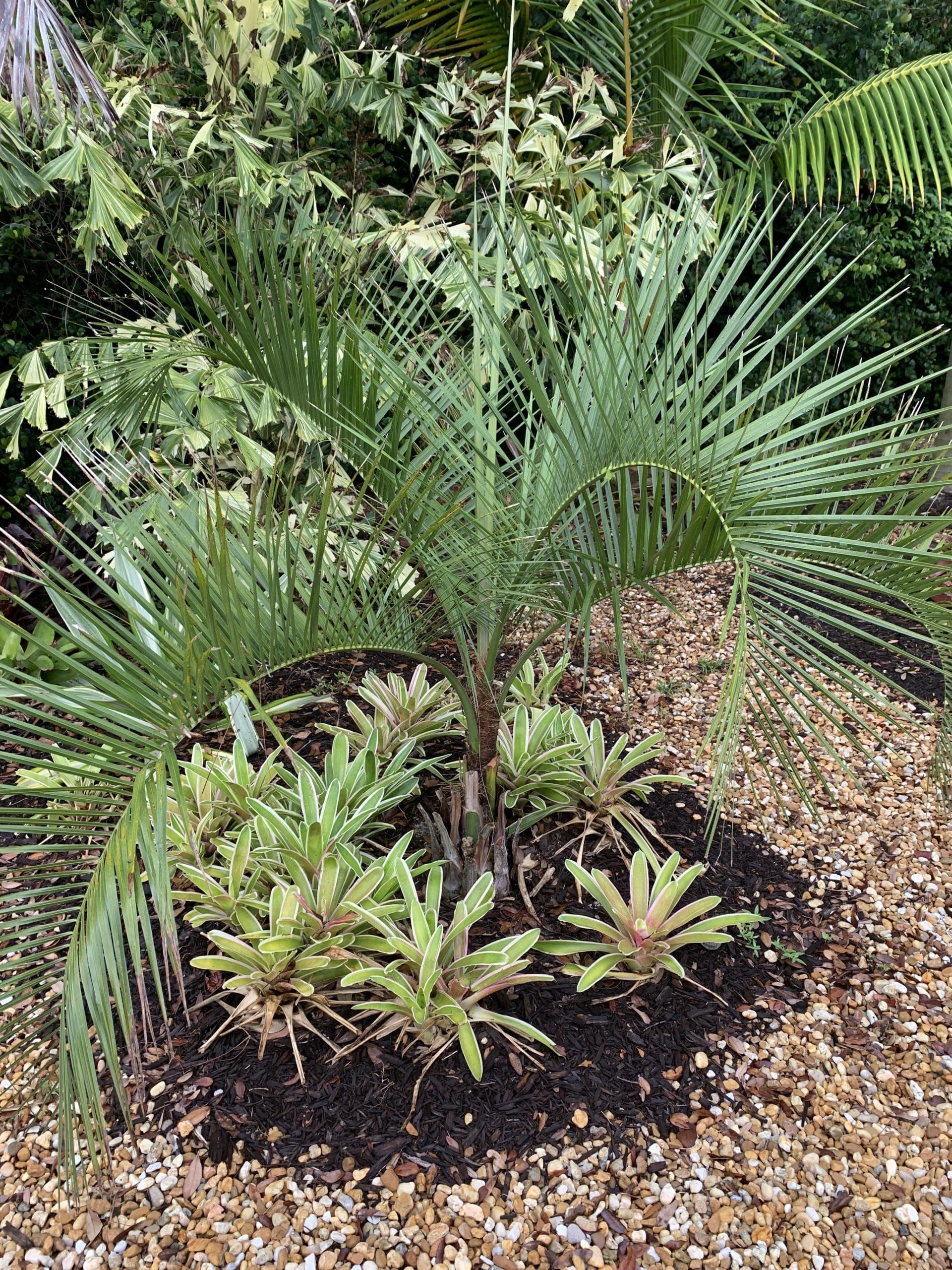Butia odorata x Syagrus romanzoffiana
Common Name: Butia odorata x Syagrus romanzoffiana
Sun: Full sun to shade
Growth Rate: Fast
Fertilizer: Low
Water: Very Low (possibly only 8-10” of rain needed per year)
Cold Tolerance: around 15deg F
History: This palm was initially cultivated by Dr. Merrill Wilcox in north Florida in the 1980’s. Some early plants were planted in Florida and also sent to California. One of Dr. Wilcox’s original trees is growing beautifully at the Huntington Botanical Gardens in east Los Angeles, CA.
Production: The seed parent is Butia odorata (aka Pindo Palm; Jelly palm) from Brazil, Argentina, Paraguay, Chile, and Uruguay. The pollen parent is Syagrus romanzoffiana (aka Queen Palm), also from Brazil (Bahia region). The seed parent is usually easy to work with due to its slow growth rate and smaller size. The flowers are large and generally easy to pollinate. The Queen Palm produces abundant pollen that is easy to gather and apply. Rate of viable seed is 70-90% and germination is easy- usually taking 2-3 months in mild or warm temperature conditions. Some seeds produce up to 2-3 separate palms because each of the three “eyes” on the nut may contain a separate, viable embryo. Once in a while, variegated seedlings come up in large batches, but they not surprisingly die off or grow out of their striping.
Benefits: Extremely hardy. This is probably the toughest hybrid palm and one of the toughest of all palms. This hybrid will grow in just about any soil, lives off very little water, requires no fertilizer, grows very fast, and is adaptable to severe frost and just about any amount of sun. It is sterile so there is no need to pull or spray seedlings that sprout underneath other pure palm species. This hybrid bears some resemblance to the common Cocos nucifera (aka Coconut Palm). This palm produces long, beautiful fronds ranging from 10-18 feet long (depending on which parent each plant take on more traits from). In general, separate plants from the same grex (batch of seed from one single seed cluster) are highly-variable, with trunks and frond size varying considerably.
Identification: These typically can’t be identified until they have pinnate leaves (about a small 1-gallon size). Leaflets are stiff and pokey and fronds have a slight curve to them at a young age. This hybrid’s fronds tend to go pinnate (become feather-like) earlier on than the pure Queen Palm.





